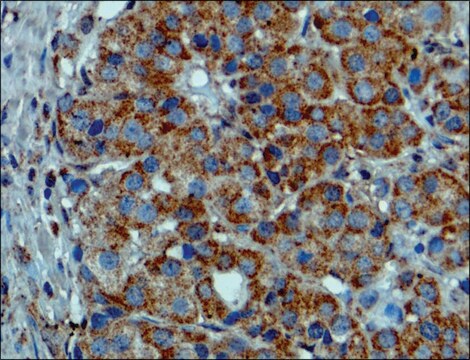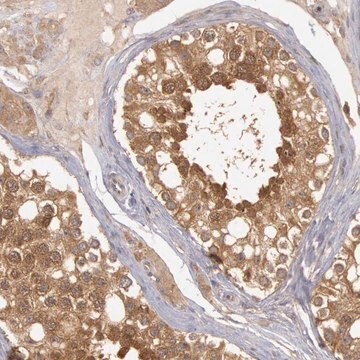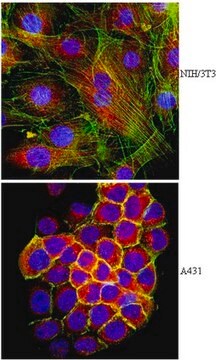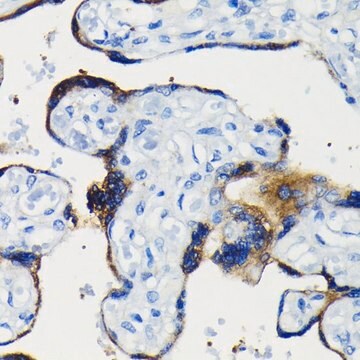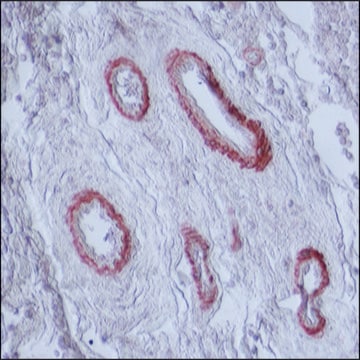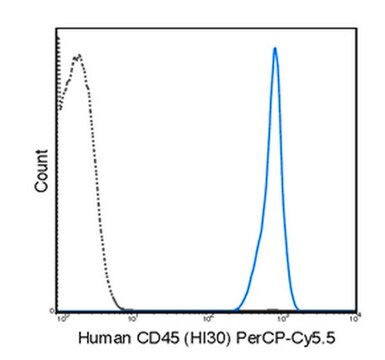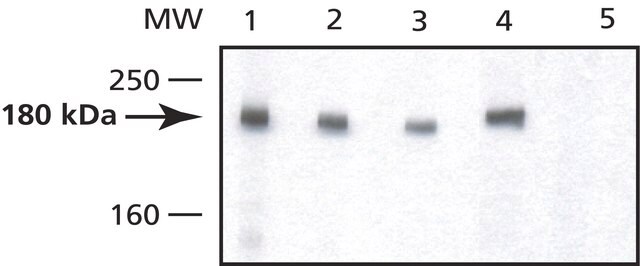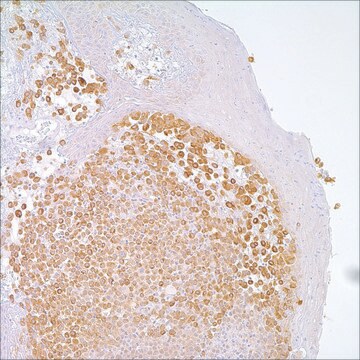SAB4200772
Anti-BRAF (V600E) antibody produced in rabbit

affinity isolated antibody
Synonym(s):
Anti-Proto-oncogene B-Raf, p94, Anti-Serine/threonine-protein kinase B-raf, Anti-v-Raf murine sarcoma viral oncogene homolog B1
About This Item
Recommended Products
biological source
rabbit
Quality Level
antibody form
affinity isolated antibody
antibody product type
primary antibodies
clone
polyclonal
form
buffered aqueous solution
mol wt
~95 kDa
species reactivity
human
enhanced validation
recombinant expression
Learn more about Antibody Enhanced Validation
concentration
~1 mg/mL
technique(s)
immunoblotting: 2-4 μg/mL using extract of human HEK-293T cells over-expressing BRAF mutant (V600E) protein
UniProt accession no.
shipped in
dry ice
storage temp.
−20°C
target post-translational modification
unmodified
Gene Information
human ... BRAF(673)
Related Categories
General description
BRAF is mutated at a high frequency in several cancers, including non-Hodgkin lymphoma, colorectal cancer, malignant melanoma, thyroid carcinoma, nonsmall cell lung carcinoma, and adenocarcinoma of lung.
Specificity
Immunogen
Application
Physical form
Not finding the right product?
Try our Product Selector Tool.
Storage Class Code
10 - Combustible liquids
WGK
WGK 3
Flash Point(F)
Not applicable
Flash Point(C)
Not applicable
Choose from one of the most recent versions:
Certificates of Analysis (COA)
Don't see the Right Version?
If you require a particular version, you can look up a specific certificate by the Lot or Batch number.
Already Own This Product?
Find documentation for the products that you have recently purchased in the Document Library.
Global Trade Item Number
| SKU | GTIN |
|---|---|
| SAB4200772-100UL | 4061833265284 |
Our team of scientists has experience in all areas of research including Life Science, Material Science, Chemical Synthesis, Chromatography, Analytical and many others.
Contact Technical Service